
Introduction
Dussehra is celebrated after Navratri and marks the victory of Lord Rama over the demon Ravana. Dussehra falls on the 10th day of the month of Ashvina in the Hindu calendar, which corresponds to September-October in the Gregorian calendar. The festival is known as “ten (dasha) defeat (hara)” in Sanskrit, representing Ravana’s ten heads. It will be celebrated on 24th October, Tuesday, in India in 2023. The festival is celebrated as the victory of good over evil, with two famous legends – Lord Rama defeating Ravana and Goddess Durga defeating Mahishasura. Celebrations include Dussehra puja, Ramleela performances, burning effigies of Ravana, and worshipping weapons and tools. Dussehra is observed in various parts of India with regional traditions.
Best places to observe Dussehra celebrations include Delhi, Mysore, West Bengal, Bihar, Tamil Nadu, and Gujarat.
In North India, Dussehra is celebrated with Ramlila performances and burning effigies of Ravana.
In East India, it marks the end of Durga Puja, with emotional observance in Bengal.
The article provides information on Dussehra in different regions, including places to celebrate and how to reach them.
The article also mentions the year-wise observance of Dussehra and provides some FAQs related to the festival.
Mythological Story Behind it…
Vijayadashami celebrates the victory of Lord Rama over Demon Ravana and the triumph of Goddess Durga over the buffalo Demon Mahishasura. It is also known as Dussehra or Dasara. In Nepal, it is celebrated as Dashain.
Date of Vijayadashami
October 24, 2023, falls on a Tuesday.
Rituals and Timings
Some of the rituals observed on Vijayadashami include Shami Puja, Aparajita Puja, and Seema Avalanghan. These rituals are typically performed during the Aparahna time.
- – Vijay Muhurat: 01:58 PM to 02:43 PM (Duration: 45 minutes)
- – Aparahna Puja Time: 01:13 PM to 03:28 PM (Duration: 2 hours and 15 minutes)
- – Dashami Tithi Begins: 05:44 PM on October 23, 2023
- – Dashami Tithi Ends: 03:14 PM on October 24, 2023
- – Shravana Nakshatra Begins: 06:44 PM on October 22, 2023
- – Shravana Nakshatra Ends: 05:14 PM on October 23, 2023
Durga’s Nine Forms (Navadurga)
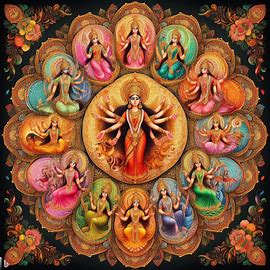
9 Forms of Goddess Durga…
Here is a list summarizing the main points of the article about Navratri and the worship of Goddess Durga in its nine forms:
Navratri is a nine-day festival in India that celebrates the triumph of good over evil and the restoration of dharma (righteousness) over adharma (unrighteousness). During Navratri, Goddess Durga is worshipped in her nine forms, each representing various qualities and attributes. The nine forms of Goddess Durga are:
a. Maa Shailaputri: She is the daughter of the mountain, and she is worshipped on the first day of Navratri. Symbolizes power, with a crescent moon on her forehead and a trident in her right hand. Devotees wear orange on this day.
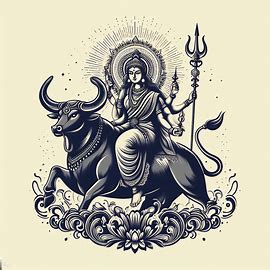
b. Maa Brahmacharini: In her unmarried form, she is worshipped as Goddess Brahmacharini, and She did great penance to attain Lord Shiva as her husband. Represents austerity and carries a Japa mala. White is the color associated with this form.
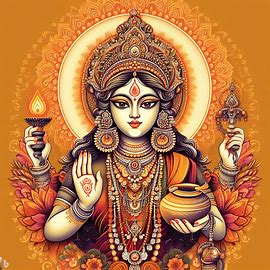
c. Maa Chandraghanta:The married avatar of Maa Parvati, she adorns her forehead with a half or crescent moon and is worshipped on the third day of Navratri. Adorned with a half-moon on her forehead, she brings tranquility and prosperity. Devotees wear red.
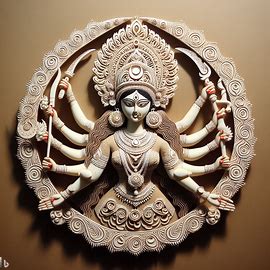
d. Maa Kushmanda: She has the power to live inside the Sun and radiates as luminously as the Sun. She has eight hands and is known as Ashtabhuja Dev. Known for creating the world and bestows well-being. She has eight hands and is associated with royal blue.

e. Maa Skandamata: When she became Lord Skanda’s mother, she was known as Maa Skandamata. She mounts a ferocious lion and carries baby Murugan in her lap. The mother of the war God Skanda, she rides a lion and carries Lord Skanda. Yellow is the color for this form.
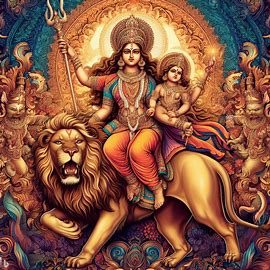
f. Maa Katyayani: To destroy the demon Mahishasura, she took the form of Goddess Katyayani, known as the Warrior Goddess, and is worshipped on the sixth day of Navratri. Born to destroy the demon Mahishasura, she is associated with green and represents new beginnings.
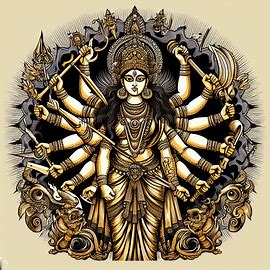
g. Maa Kalaratri: She removed her golden skin to kill the demons Shumbha and Nishumbha and is the fiercest form of Goddess Parvati. She has a dark complexion and is depicted with four hands. Known for her dark complexion and fearlessness. She is associated with grey and is the Goddess of death.
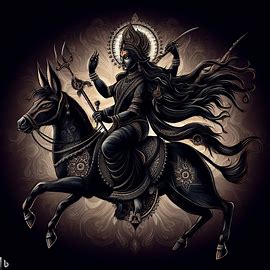
h. Maa Mahagauri: At the age of sixteen, she was extremely beautiful and had a fair complexion. She governs the planet Rahu and is known for her fair skin tone. Represents purity, cleanliness, and endurance. Devotees wear purple.
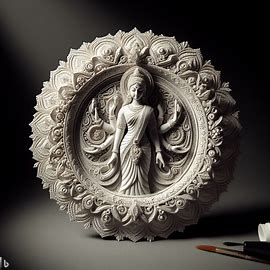
.i. Maa Siddhidhatri: She is the Goddess who possesses and bestows all types of Siddhis to her devotees, and she appeared from the left half of Lord Shiva. Possesses natural healing powers and is associated with peacock green.
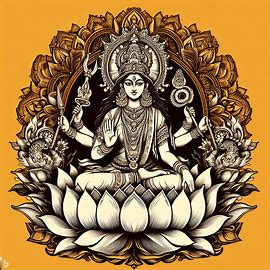
Regional Variations of Dussehra Celebrations in India
India’s beloved Durga Puja holiday features colorful regional variations that highlight the country’s diverse cultural heritage. The celebrations are highlighted by opulent processions, exquisitely carved idols, and complex ceremonies in West Bengal, the birthplace of Durga Puja. The event is observed in the northern state of Himachal Pradesh with a special sense of simplicity and devotion, frequently centering on spiritual meetings and traditional music. The state of Karnataka in the south offers a fusion of traditional practices and contemporary art, presenting a variety of creative idols. Assamese traditions and the worship of the Goddess are harmoniously combined when Durga Puja and Bihu, an indigenous holiday, fall on the same day in the eastern state of Assam. Each location gives the festival its own unique character.
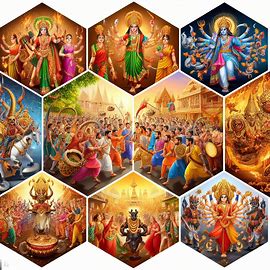
Evolution of Durga Pooja and its Contemporary Significance
The evolution of Durga Puja across time is a sign of cultural dynamism. It began as a straightforward, familial event and has since grown into a lavish extravaganza. The idols, which were originally made of clay by local artists, have evolved into magnificent works of art. Themes and pandal designs have evolved to become more complex, exhibiting creative and varied storytelling. The adoration of the Goddess and the celebration of her power, however, remain essential.
Present-day Importance:
The significance of Durga Puja today transcends all religious distinctions. It is a cultural event that draws individuals from all walks of life in addition to the pious. The economic importance is apparent as local companies, artisans, and craftspeople prosper. Communities come together for the event in a spirit of unity that transcends societal boundaries.
Cultural Relevance:
Artists, dancers, and musicians can highlight their talents during Durga Puja. During these nine days, cultural events, dancing performances, and art exhibitions are in abundance. The event promotes and maintains a cultural legacy, keeping it relevant in a world that is always changing.
Economic Importance
Durga Puja creates jobs for everyone from idol manufacturers to pandal designers. As the demand for clothing, jewelry, and food rises, local businesses prosper. The community feels the effects of the economy, which boosts the local economy.
Conclusion
Durga Puja has subtly changed over time, flawlessly fusing tradition and innovation while holding on to its fundamental principles. It is a festival that crosses religious lines and invites all to participate in its colorful cultural kaleidoscope. As we investigate the past and present of this important holiday, we realize that Durga Puja is more than simply a celebration; it is a live, breathing representation of art, community, and the harmony of all cultures. Its economic importance supports local companies and craftspeople, strengthening the very communities that keep it going. So, explore the content of this post, honor the Durga Puja spirit, and spread the word about this adventure to help others find their inner light. Keep the customs alive, prosperous, and evolving.
